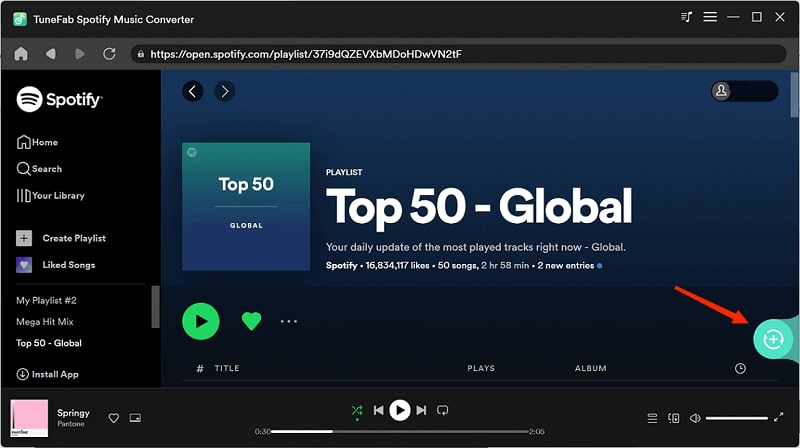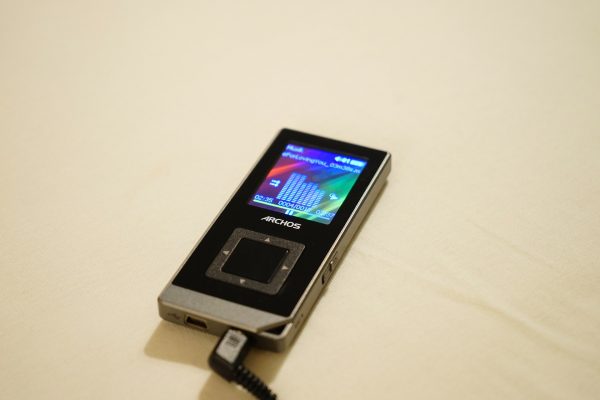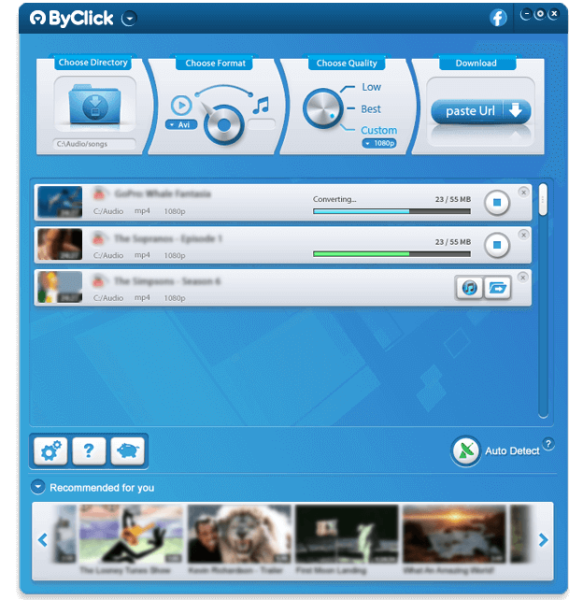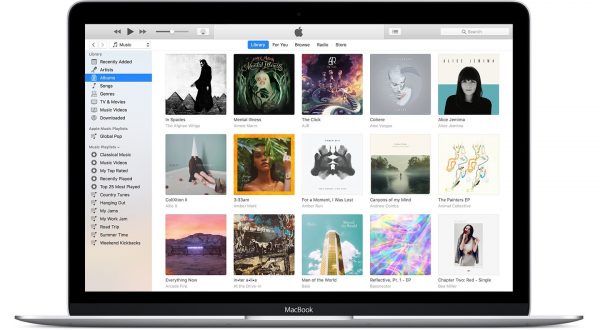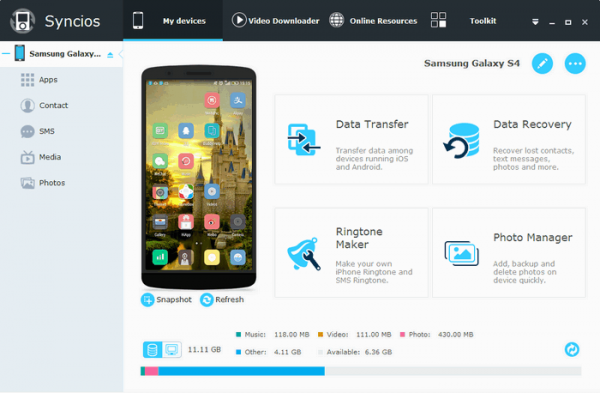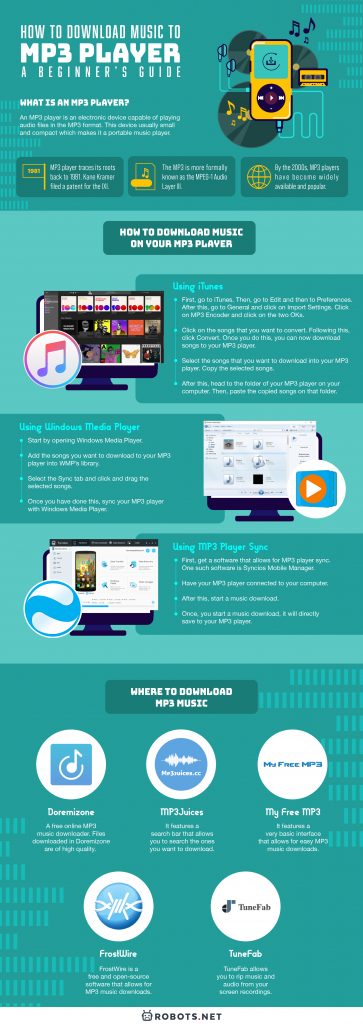If you are a streaming music lover, learning how to get the songs you like for playing on MP3 players must be a skill you want to process. When many streaming music providers such as Spotify have not yet been compatible with all MP3 players, you need to convert Spotify to MP3 to get rid of DRM encryption and transfer the DRM-free MP3 music files to your MP3 players for offline streaming. TuneFab Spotify Music Converter has provided the powerful functionality to download all Spotify playlists and podcasts from Spotify. With the web player embedded, it supports saving the Spotify songs you like in DRM-free MP3 files with the best 320kbps quality. Also, the software will preserve full ID3 tags with the songs, making it simple for you to manage the music library after transferring to MP3 players. Here is a beginner’s guide on how to download music to an MP3 player.
What is an MP3 player?
An MP3 player is an electronic device capable of playing audio files in MP3 format. This device usually small and compact which makes it a portable music player. It has a small hard drive within it that is capable of storing large amounts of MP3 audio files. These MP3 audio files usually contain songs. Aside from songs, these files can also be voice recordings, audiobooks, and podcasts. You can hear these files through the MP3 player’s built-in speakers. Hearing MP3 files is also possible through earphones, headphones, and speakers. The MP3 player allows its users to bring it around easily and to play music anytime and anywhere.
Other Music Players
There were other forms of music players before the MP3 player came. These took the form of boomboxes, cassette players and CD players. Boomboxes played music through its built-in cassette players, radio and CD player. These featured two loudspeakers through which you can hear the music that comes from a cassette tape or CD. While it is portable, it is quite large and bulky due to the amount of in-built devices it has. A cassette player is a music player that can play cassette tapes. Cassette tapes had music or other audio recorded into magnetic tapes. Magnetic tapes use long plastic strips that can embed information. Meanwhile, a CD player is another music player that can play audio from CDs. CDs usually contain music and other audio files and recordings. These are usually digitally stored in a CD. MP3 players aim to be more compact and portable than previous music players. They also aim to be able to store more music files in a much easier way. This player also aims to make music much more accessible for people to hear.
History of the MP3 player
The MP3 player traces its roots back to 1981. In that year, British businessman Kane Kramer filed a patent for the IXI, the first digital audio player. It was as small as a credit card, had a small screen, and came with navigation and volume buttons. It had a chip capable of storing 8 MB of data or three and a half minutes of music. In 1987, German research institute Fraunhofer Institut began its work on digital audio. Its aim was to code music that has high quality but low bit-rate sampling. The result of this work is the MP3 format which is patented in 1989. The MP3 is more formally known as the MPEG-1 Audio Layer III. This is one of the most common coding formats for digital audio. This format allowed for high-quality audio to compress into much smaller file sizes. Before this, high-quality audio had to take up a lot of storage space. When compared to similar digital audio in CDs, you can see a great difference with MP3s. You can shrink down a digital audio file on CD by twelve times into an MP3 audio file. By the 2000s, MP3 players have become widely available and popular. This is due to it being a small, compact player for a vast collection of songs. Its use of songs stored in MP3 format files made it easier for people to access songs. Its small file sizes became useful when Internet bandwidth and storage were premiums. They can be easily uploaded on and downloaded from the Internet. This is the reason why it was easy for people to access songs in MP3 format.
How Do MP3 Players Work?
To understand how MP3 players work, we need to understand first how MP3 files work. MP3 is a format for storing music and other audio recordings in a digital way. You can only decode and play files in MP3 format on devices like an MP3 player. These players cannot work with audio files stored in formats other than MP3. MP3 is a digital technology which means that music stored in this format becomes numbers. CDs also apply the same digital technology used to create MP3 files. But, the noticeable difference is how smaller MP3 files are than CDs. CDs also apply the same digital technology used to create MP3 files. But, the noticeable difference is how smaller MP3 files are than CDs. For example, an audio file on a CD has a 32 MB file size. The same file in MP3 format can only have a file size of 3 MB. The MP3 format does this by compressing the audio file. You can compress audio files by lowering the bit rate. Bits are binary digits that can stand in for information. Lowering the bits means less information is being stored. The lesser stored information can mean reduced audio quality. Audio files in MP3 format do have lower audio quality than those in CDs. But, usually, people cannot tell the differences in the audio quality of the two formats. Taking advantage of this, the MP3 format removes unnecessary information from audio files. The reason is that the removed information is inaudible and irrelevant. This allows the file’s size to be smaller after compression. This removal of information bases itself on perceptual noise shaping. This means that the MP3 file compression happens based on the characteristics of a human ear. As a result, it seems as if the MP3 file did not lose as much audio quality. This happens as there are sounds a human ear can hear. There are also sounds that a human ear cannot hear. When two sounds play at the same time, you can hear the loud one but not the soft one. Considering these, MP3 file compression is possible. The quality of this compression while low is comparable to CDs. Audio files can even compress into MP3 format to the point of reaching near-CD quality. As a result of MP3 file compression, music became more accessible. Its small size meant sharing it through the Internet was not a problem. This is because it did not affect Internet bandwidth too much. Also, mixing MP3 files’ small size and large storage sizes, it is like music became an on-demand thing. You can carry around lots of songs on one device and listen to it anytime and anywhere.
How to Download Music on Your MP3 Player
There are a lot of ways to download music on your MP3 player. These steps are usually easy to do and very straightforward. Here are some of the easy ways that you can do to download music on your MP3 player.
By Click Downloader
Without an MP3 Player, it’s possible to listen to music online on platforms like YouTube, Soundcloud, YouTube Music, and many others. It is convenient if you have the ability to download online music catalogs in MP3 audio format so you can transfer them to your MP3 Player divice. And the simplest free way to do this is using By Click Downloader. By Click Downloader is a traditional lightweight software that lets you download music, playlists, and video clips from dozens of platforms to listen offline on your MP3 player. It automatically converts videos into MP3, WAV, and other high-quality audio formats. It has millions of users worldwide, and is a 100% secure and efficient solution for downloading media files. By Click Downloader can also work as an offline local file converter, meaning you can convert media files to your preferred extension format without needing an internet connection. In addition, this software supports downloading and converting from an extensive range of sites such as Facebook, Instagram, Vimeo, TikTok, Twitter, and so on. This is how it works:
iTunes
iTunes is a media player and media library created by Apple in 2001. It also serves as an app for buying music on the iTunes Store. During the early years after its 2001 launch, it was mainly used for downloading and streaming music. It was heavily used to store and transfer music into MP3 players. While people know iTunes for MP3 files, it doesn’t actually handle MP3 files; iTunes actually uses the AAC file format. While AAC and MP3 are similar in format, AAC uses completely different digital encoding formats and techniques. AAC can encode to provide a better sound quality while still having a file size similar to an MP3 file. This means that before transferring music to your MP3 player, you need to do file conversion. You would need to convert an AAC file to an MP3 file to be able to play iTunes songs on your MP3 players. There is a simple way to do this.
Using Windows Media Player
Windows Media Player is a media player and media library created by Microsoft. Usually used for music, it is also used for viewing videos and photos. Aside from being a media player, it also has additional functions. These include music rip, disc burn, and content sync. This media player is also used to download music into your MP3 player. This is possible by syncing your MP3 player with Windows Media Player. To do this, start by opening Windows Media Player and adding the songs you want to download to your MP3 player into WMP’s library. Following this, move the songs into the sync list. To do this, select the Sync tab and click and drag the selected songs. Once you have done this, sync your MP3 player with Windows Media Player. Select the song you want to download into your MP3 player. Clicking Start Sync will start transferring the song into your MP3 player.
Using Windows PC
It is possible to download music into your MP3 player by using a Windows PC. To do this, you simply plug in your MP3 player on the Windows PC. Drag the MP3 files into your MP3 player from the Windows PC. Connect your MP3 player to your Windows PC through a USB cable. After that, click the Start Button, head for the Explorer, and open Windows Explorer. Locate your MP3 player, which is usually marked as a removable disc on My Computer. Following this, find the folder that contains the songs that you want to put into your MP3 player. Select the songs and drag and drop them into the MP3 player’s folder on your Windows PC. After this, safely remove your device from the Windows PC. Once you do this, you have successfully transferred music to your MP3 player.
Using MP3 Player Sync
There is software out that that allows for the syncing of MP3 players. This means that you can download music directly to your MP3 player. You do not need to manually transfer music to your MP3 player using a computer. First, get software that allows for MP3 player sync. One such software is Syncios Mobile Manager. It allows files such as MP3 files to be directly downloaded to your MP3 player. The software also allows for video downloads, as well as file conversions. To achieve this, have your MP3 player connected to your computer. Start a music download once your device is connected. Once a music download begins, it will directly save to your MP3 player.
How to Convert CD music Into MP3
If you are finding CDs to be a hassle, you can turn its stored music into an MP3 file. All you need for turning a CD music file into an MP3 file is Windows Media Player. Start by inserting the CD then opening your Windows Media Player. Afterward, head to the Rip tab and choose More Options. Following that, go to Rip Music and select MP3 under Rip Music. Select the songs you want to rip and click on Rip. Once the ripping of the CD music is complete, you can now see it as MP3 files on your computer.
